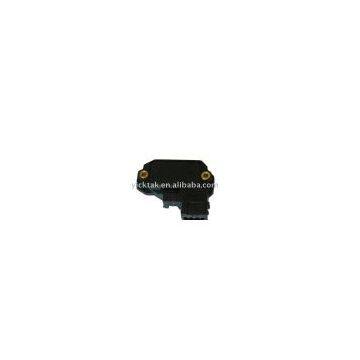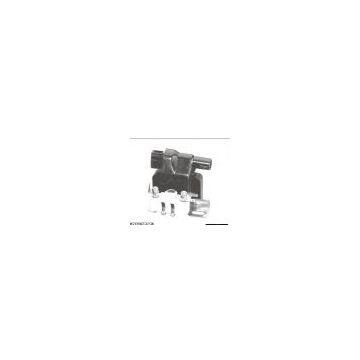Ignition Coil Insights & Buyer's Guide
In recent years, ignition coils have become very important components for cars and play a major role in the ignition system. Basically, low voltage from the battery is converted by the coils into a much higher voltage that will, in turn, create a spark across the plug that ignites the air-fuel mixture within the cylinders. This process is what is purported to start the engine and allow it to run smoothly. Knowing what ignition coils are, how they work, and their importance will keep their owners updated on maintaining the engine well, thus preventing misfires and inefficient fuel usage. This article will discuss in detail all that one needs to know about the ignition coil, how it works, and its function in the vehicle.
What is an Ignition Coil?
Definition and Functions
An ignition coil is a transformer that forms part of the engine's ignition system. Its job is to convert the battery voltage from low to high, which is then fed to the spark plug via spark plug wires or a coil-on-plug system. The ignition coil is composed of two windings: the primary winding and the secondary winding. As current passes through the primary winding, a magnetic field is built up. When the flow of current is interrupted, this field collapses, thereby creating in the secondary winding a high voltage pulse. This high voltage is essential to produce the spark, which ignites the air-fuel mixture within the cylinders of the engine.
How Does an Ignition Coil Work?
An ignition coil works on the principle of electromagnetic induction. When the ignition system of the engine triggers the coil, a low-voltage current runs through the primary winding and creates a magnetic field. This field is suddenly collapsed by the interruption of the current, which causes rapid changes in magnetic flux and gives rise to an induced high voltage in the secondary winding of the ignition coil. The voltage reaches even tens of thousands of volts, enough from the spark to jump across the gap in the spark plugs and ignite the air-fuel mixture. In the earlier vehicles, all cylinders were served by one ignition coil connected to a distributor, but modern vehicles commonly use a coil pack or even one coil for each cylinder, hence better performance.
The Importance of a Well-Functioning Ignition Coil
A well-functioning ignition coil would exert a stupendous influence on good engine performance and reliability. Bad coils can give rise to the misfiring of engines, poor fuel consumption, and higher levels of emissions. Sometimes, in some cases, a defective coil triggers the check engine light which indicates the time for diagnosis and repair. With a good ignition coil, vehicle owners can avoid these problems and guarantee that proper combustion occurs in the engine. For their longevity and surely safe and smooth operation on the road, vehicles plus other auto parts need to be checked and maintained regularly.
Ignition Coil Types
Conventional Ignition Coil
An archetype for the working of conventional ignition, labeled for older vehicles, consideration one ignition coil with a distributor arrangement. One coil would build up the highest voltage to ignite the air-fuel mixture in each cylinder. The distributor system would then send the high voltage from the ignition coil to the appropriate spark plug in time. Despite the simplicity, though, conventional ignition systems used mechanical parts that, with age, began to drop their performance, leading to engine malperformance and possible misfiring. As technology progressed, however, the limitations of the conventional systems opened up opportunities for more efficient ignition systems.
Distributor-less Ignition Coil System (DIS)
Distributor-less ignition coils were a giant leap forward from conventional systems by removing the mechanical distributor. The DIS system uses ignition coil packs in place of a single ignition coil bus, so each pair of cylinders shares one coil. This coil pack system improves reliability by reducing the number of moving parts and enhances performance by providing a more precise spark timing. The reduction of power loss in the combustion process helps fuel economy and conservation of the atmosphere with reduced emissions. The use of electronic ignition control further enhances system diagnostics and allows easier identification of issues; for example, an ignition coil fault can trigger the check engine light.
Coil-on-Plug Systems
Coil-on-Plug systems can be defined as the present-day realization of the ignition concept in which, for each cylinder, an ignition coil located directly atop its spark plug exists. This arrangement obviates the need for spark plug wires, which would otherwise result in an increased energy loss. The COP system ensures that each cylinder receives the optimum voltage suitable for combustion, thus enhancing engine performance and response. Also, more time can be spent precisely assigning ignition timing with a single coil per cylinder, improving overall efficiency and lowering emissions. The COP system has emerged as the best ignition coil setup functioning in today`s automobiles, ensuring good performance and reliability.
Different Signs of a Defective Ignition Coil
Illuminated Check Engine Light
One of the immediate and most noticeable causes of an illuminated check engine light is the presence of a defective ignition coil. The ignition system plays a vital role in the total performance of an engine, and a small disruption can turn this warning light on. On failure of the ignition coil to convert the minimal voltage received from the battery into an immensely large voltage for sparking the ignition in an air-fuel mixture, partial combustion results. It is this partial combustion that is analyzed by the onboard diagnostic system of the vehicle; on its confirmation, the check engine light is caused to turn on. Vehicle owners should be willing to immediately examine such alerts; ignoring them will mean that the continued operation of the vehicle with a faulty ignition coil will only exacerbate the existing mechanical problem or may develop into a more serious misfire.
Engine Misfire and Other Symptoms
This is a common symptom of ignition coil failure with a rough idle, hesitation during acceleration, or perceived loss of power. Unless the ignition coil supplies sufficient high voltage, the spark plugs cannot ignite properly the air-fuel mixture inside the cylinders, and in cases of misfires, one or more cylinders may stop firing properly, thus causing a severe drop in engine performance. This misfire vibration increases exhaust emissions and may also cause damage to the catalytic converter if it lingers for a long time. However, a timely diagnosis of the symptoms and replacement of a defective ignition coil can prevent the need for extensive repairs and ensure the smooth running of the vehicle.
Other Symptoms and Warnings Pointing to an Ignition Coil Problem
Besides the illuminated check engine light and the symptom of engine misfire, there are a number of other signs warning of a failing ignition coil. Some of the signs one can offer are poor fuel economy, as a faulty coil renders inefficient combustion and so eats more fuel to keep the engine power eutrophic. Backfiring will also occur, amongst other things, or black smoke might be coming from the exhaust when the ignition coil simply won't ignite the air-fuel mixture properly, thus allowing the unburnt fuel into the exhaust system. Loss of engine power with sluggish acceleration or activity unkind that is hard, even for a change, might also set your suspicion finely on the ignition coil. Vehicle owners should keep an eye out for these signs to avoid additional engineering defects and road maintenance.
Maintenance and Replacement Tips
How to Check for a Bad Ignition Coil
In order to preserve optimal engine performance, one must regularly check for the signs of a bad ignition coil. During the examination, technicians inspect the ignition coil and the spark plug wires for any apparent damage, especially cracks or corrosion. Using a digital multimeter, an experienced technician will measure the resistance of each winding of the coil, primary and secondary, with the measured values falling within a range specified by the manufacturer. An increase in resistance may be a sign of a bad ignition coil. The neglect of symptoms such as engine misfires, poor fuel economy, and check engine light illumination may also point toward ignition coil problems. An early diagnosis of failure renders it possible to prevent additional damage and maintain efficient ignition so that losses are minimal.
Replacing an Ignition Coil: A Step-by-Step Guide
Caution must be exercised during the replacement of an ignition coil, lest it stop functioning properly and affect the entire ignition system.
First, disconnect the battery to avoid any electrical hazards.
Find the ignition coil, which can be concealed in a coil pack or a coil-on-plug system, depending on the design of the vehicle. Unplug any connectors and remove any bolts that hold the coil in place.
Make a note of how the spark plug wires are positioned into the ignition coil, or the position of the coil-on-plug, so that it can be mounted properly after installation of the replacement.
Fit the new ignition coil back into position with bolts fastening it into place, then connect all wires and connectors.
Finally, reconnect the battery, start the vehicle, and ensure that the ignition issues have been solved and that the engine is once again running efficiently.
Preventive Measures to Extend Ignition Coil Life
To enhance ignition coil life, certain maintenance and preventive procedures must be adopted. Making sure spark plugs are replaced within their stipulated periods will ensure that worn spark plugs do not cause unnecessary stress on the ignition coil by demanding higher voltage for combustion. Keeping the coil and its vicinity clean will prevent debris or moisture from causing damage. Checking the ignition system intermittently for any loose or damaged wiring is always desirable. Good quality fuel and oil diminish deposits and allow smooth current flow via the primary winding to maintain the magnetic field required for smooth operations. This will certainly prolong the life of an ignition coil and ensure dependable engine performance for many years.
Frequently Asked Questions (FAQs)
What are the common signs of a bad ignition coil?
Common signs of a bad ignition coil include engine misfire, hesitation during acceleration, and the check engine light illuminating on your dashboard. You might also notice a jerk when driving, which can indicate that the ignition system is not firing properly. A bad ignition coil may lead to unburned fuel in the air-fuel mixture in the engine, resulting in poor fuel efficiency. If your vehicle experiences backfire, it could be a sign that the ignition coil is failing to provide the necessary high-voltage spark. Regular maintenance and timely replacement of ignition coils can prevent these issues.
What are the different types of ignition coils used in engines?
There are several types of ignition coils used in internal combustion engines, including traditional ignition coils and the more modern distributorless ignition system. Older ignition systems may utilize a single ignition coil for multiple cylinders, whereas newer systems often feature individual coils, with each cylinder having its ignition. Ignition coils consist of primary and secondary windings that work together to transform battery voltage into the high voltage needed to ignite the fuel. Understanding the types of ignition coils can help you identify which one is suitable for your make and model vehicle.
How does an ignition coil work in an engine?
An ignition coil transforms battery voltage into a high-voltage spark that ignites the fuel in the combustion chamber. When current flows through the primary winding of the ignition coil, it creates a magnetic field around the coil. As the control module triggers the ignition event, the magnetic field collapses, and the energy is released into the secondary winding, generating a high-voltage output. This high-voltage spark is then sent to the top of each spark plug, igniting the air-fuel mixture in the engine. Understanding how ignition coils work can help you diagnose issues if your vehicle exhibits signs of misfire or other ignition-related problems.
What causes ignition coils to fail?
Ignition coils can fail due to several factors, including heat, vibration, and wear over time. The coil body might degrade, or the copper wire inside can become damaged, leading to poor conductivity. Additionally, if the spark plug wires are worn or damaged, they can put extra strain on the ignition coils, causing them to fail prematurely. Common signs that coils fail include engine misfire and a check engine light warning. Regular inspections of ignition system parts can help catch issues before they lead to complete coil failure.
Can a bad ignition coil cause an engine to misfire?
Yes, a bad ignition coil can cause an engine misfire. When the ignition coil is not functioning correctly, it may not deliver the required high-voltage spark to the spark plugs, resulting in an incomplete combustion cycle. This can lead to symptoms such as a rough idle, reduced power, and fuel inefficiency. If multiple cylinders are affected, you may experience a significant jerk while accelerating or even a backfire. Timely diagnosis and replacement of faulty ignition coils are essential to maintain optimal engine performance.
 ignition coilNegotiableMOQ: 1 SetPlace of Origin: ChinaWenzhou Degao International Trade Co., Ltd.
ignition coilNegotiableMOQ: 1 SetPlace of Origin: ChinaWenzhou Degao International Trade Co., Ltd. ignition coilNegotiableMOQ: 1 SetPlace of Origin: ChinaWuyi Qiaowei Electrical Vehicle Co., Ltd.
ignition coilNegotiableMOQ: 1 SetPlace of Origin: ChinaWuyi Qiaowei Electrical Vehicle Co., Ltd.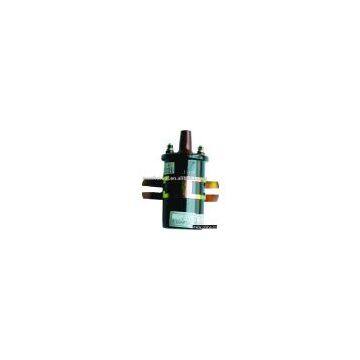 ignition coilNegotiableMOQ: 1 SetPlace of Origin: ChinaChongqing Pacific Economy & Trade Development Co., Ltd.
ignition coilNegotiableMOQ: 1 SetPlace of Origin: ChinaChongqing Pacific Economy & Trade Development Co., Ltd.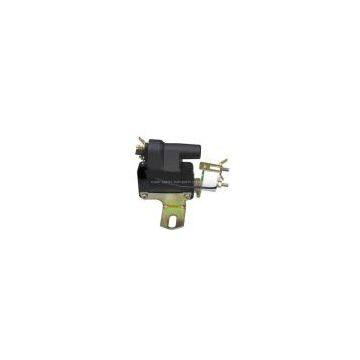 ignition coilNegotiableMOQ: 1 PiecePlace of Origin: ChinaModel Number: sm-2610aruian saima autoparts company
ignition coilNegotiableMOQ: 1 PiecePlace of Origin: ChinaModel Number: sm-2610aruian saima autoparts company ignition coilNegotiableMOQ: 1 PiecePlace of Origin: ChinaModel Number: SX1021Wenzhou Qirui Corporation
ignition coilNegotiableMOQ: 1 PiecePlace of Origin: ChinaModel Number: SX1021Wenzhou Qirui Corporation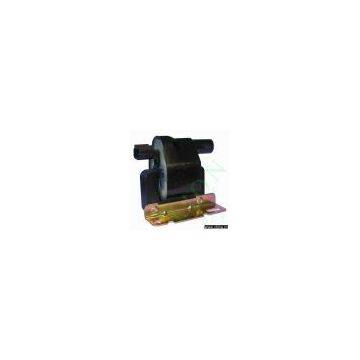 ignition coilNegotiableMOQ: 1 SetPlace of Origin: ChinaHangzhou Ocean (Auto Part) Industry Co., Ltd.
ignition coilNegotiableMOQ: 1 SetPlace of Origin: ChinaHangzhou Ocean (Auto Part) Industry Co., Ltd. ignition coilNegotiableMOQ: 1 SetPlace of Origin: ChinaZhejiang Wellink Import & Export Co., Ltd.
ignition coilNegotiableMOQ: 1 SetPlace of Origin: ChinaZhejiang Wellink Import & Export Co., Ltd. ignition coilNegotiableMOQ: 1 SetPlace of Origin: ChinaWenzhou Huizhong Electrical Auto Parts Co., Ltd.
ignition coilNegotiableMOQ: 1 SetPlace of Origin: ChinaWenzhou Huizhong Electrical Auto Parts Co., Ltd. ignition coilNegotiableMOQ: 1 SetPlace of Origin: ChinaZhejiang Tongshun Motor Vehicle Parts Co., Ltd.
ignition coilNegotiableMOQ: 1 SetPlace of Origin: ChinaZhejiang Tongshun Motor Vehicle Parts Co., Ltd.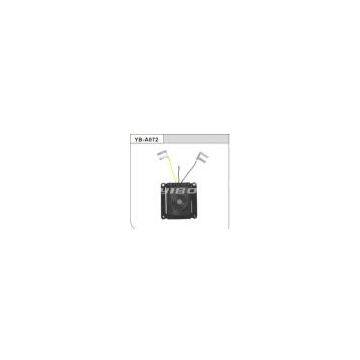 ignition coilUS$ 1 - 100MOQ: 500 PiecesBrand Name: BUGPACKPlace of Origin: ChinaModel Number: YB-A072Ruian Bugpack International Trade Co., Ltd.
ignition coilUS$ 1 - 100MOQ: 500 PiecesBrand Name: BUGPACKPlace of Origin: ChinaModel Number: YB-A072Ruian Bugpack International Trade Co., Ltd. ignition coilNegotiableMOQ: 1 SetPlace of Origin: ChinaYancheng Hengsheng International Trade Co., Ltd.
ignition coilNegotiableMOQ: 1 SetPlace of Origin: ChinaYancheng Hengsheng International Trade Co., Ltd. ignition coilNegotiableMOQ: 1 SetBrand Name: SOGREATPlace of Origin: ChinaModel Number: SD-3023Shanghai Sogreat Electronic Tech. Co., Ltd.
ignition coilNegotiableMOQ: 1 SetBrand Name: SOGREATPlace of Origin: ChinaModel Number: SD-3023Shanghai Sogreat Electronic Tech. Co., Ltd. ignition coilsNegotiableMOQ: 500 PiecesBrand Name: pairuiPlace of Origin: ChinaModel Number: FAT03-28Tianchang Fuan Electronics Co.,Ltd & Tianchang Fuan Imp.&Exp Co.,Ltd
ignition coilsNegotiableMOQ: 500 PiecesBrand Name: pairuiPlace of Origin: ChinaModel Number: FAT03-28Tianchang Fuan Electronics Co.,Ltd & Tianchang Fuan Imp.&Exp Co.,Ltd ignition coilNegotiableMOQ: 1 SetPlace of Origin: ChinaShanghai Anma Automobile Accessories Co., Ltd.
ignition coilNegotiableMOQ: 1 SetPlace of Origin: ChinaShanghai Anma Automobile Accessories Co., Ltd. NO Operations Head submitted an RFQ for Ignition Coil2025-09-28 08:11:50
NO Operations Head submitted an RFQ for Ignition Coil2025-09-28 08:11:50 IT Operations Head requested specs for ignition coil2025-09-28 07:44:55
IT Operations Head requested specs for ignition coil2025-09-28 07:44:55 SV Business Owner verified certifications for ignition coil2025-09-30 09:49:36
SV Business Owner verified certifications for ignition coil2025-09-30 09:49:36 MU Purchaser is sourcing Ignition coil2025-09-29 23:23:59
MU Purchaser is sourcing Ignition coil2025-09-29 23:23:59 NE Sourcing Agent is sourcing Ignition Coil2025-09-30 03:53:28
NE Sourcing Agent is sourcing Ignition Coil2025-09-30 03:53:28 SB Verified Buyer negotiating terms for Ignition coils2025-10-02 16:19:27
SB Verified Buyer negotiating terms for Ignition coils2025-10-02 16:19:27 BO Sourcing Agent submitted an RFQ for Ignition coil2025-10-01 11:55:11
BO Sourcing Agent submitted an RFQ for Ignition coil2025-10-01 11:55:11 PA Procurement Specialist negotiating terms for Ignition Coil5 hours ago
PA Procurement Specialist negotiating terms for Ignition Coil5 hours ago PY Operations Head requested a quote for ignition coil2025-10-02 15:51:15
PY Operations Head requested a quote for ignition coil2025-10-02 15:51:15 ignition coilNegotiableMOQ: 1 SetPlace of Origin: ChinaHaiyan Aijian Automobile Electric Appliance Co., Ltd.
ignition coilNegotiableMOQ: 1 SetPlace of Origin: ChinaHaiyan Aijian Automobile Electric Appliance Co., Ltd. ignition coilNegotiableMOQ: 1 SetPlace of Origin: ChinaRuian City Dongnan Electric Appliance Co., Ltd.
ignition coilNegotiableMOQ: 1 SetPlace of Origin: ChinaRuian City Dongnan Electric Appliance Co., Ltd. ignition coilNegotiableMOQ: 1 SetPlace of Origin: ChinaModel Number: IGP5SCixi Hengli Electric Appliances Co., Ltd.
ignition coilNegotiableMOQ: 1 SetPlace of Origin: ChinaModel Number: IGP5SCixi Hengli Electric Appliances Co., Ltd. ignition coilNegotiableMOQ: 1 KilogramBrand Name: YibonPlace of Origin: ChinaModel Number: YB-A125Ruian Yibon Auto Spare Parts Co., Ltd.
ignition coilNegotiableMOQ: 1 KilogramBrand Name: YibonPlace of Origin: ChinaModel Number: YB-A125Ruian Yibon Auto Spare Parts Co., Ltd.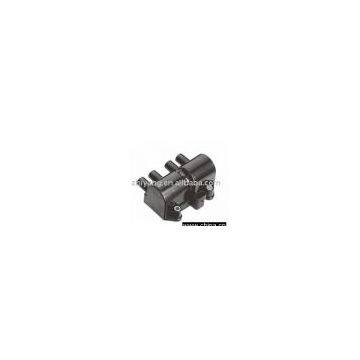 ignition coilNegotiableMOQ: 1 SetPlace of Origin: ChinaShanghai Zhiyang Automobile Electric Co., Ltd.
ignition coilNegotiableMOQ: 1 SetPlace of Origin: ChinaShanghai Zhiyang Automobile Electric Co., Ltd.



